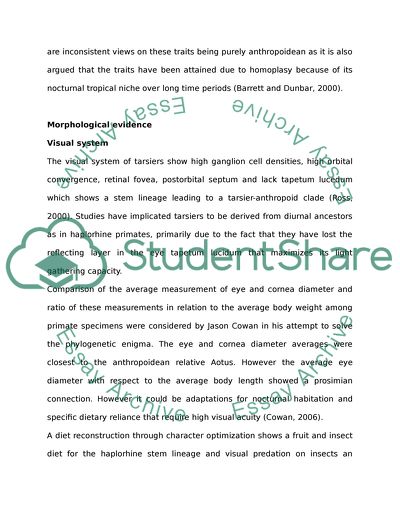Phylogenic Evidence of Tarsiers as Anthropoids Essay. Retrieved from https://studentshare.org/miscellaneous/1505103-phylogenic-evidence-of-tarsiers-as-anthropoids
Phylogenic Evidence of Tarsiers As Anthropoids Essay. https://studentshare.org/miscellaneous/1505103-phylogenic-evidence-of-tarsiers-as-anthropoids.


